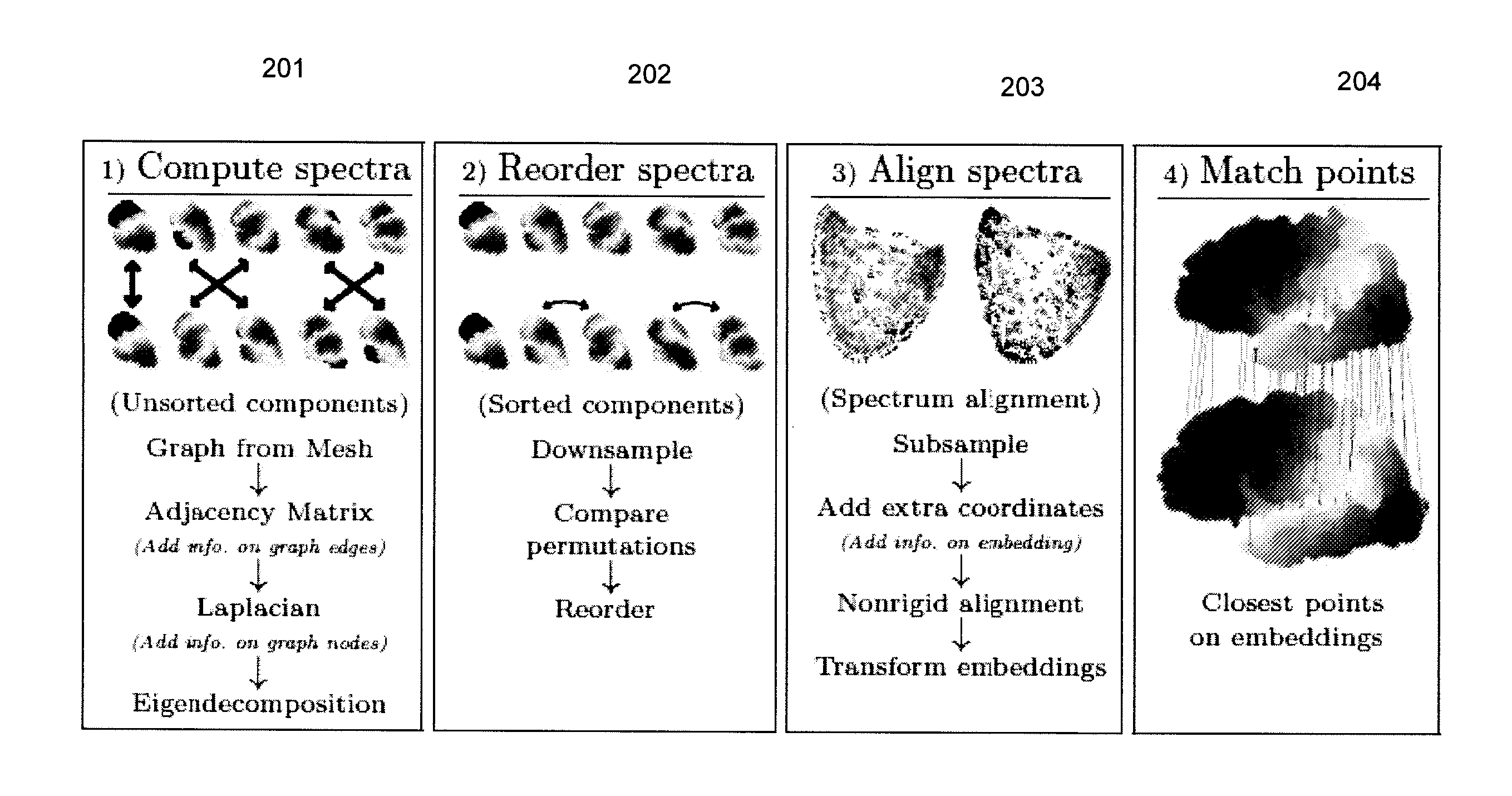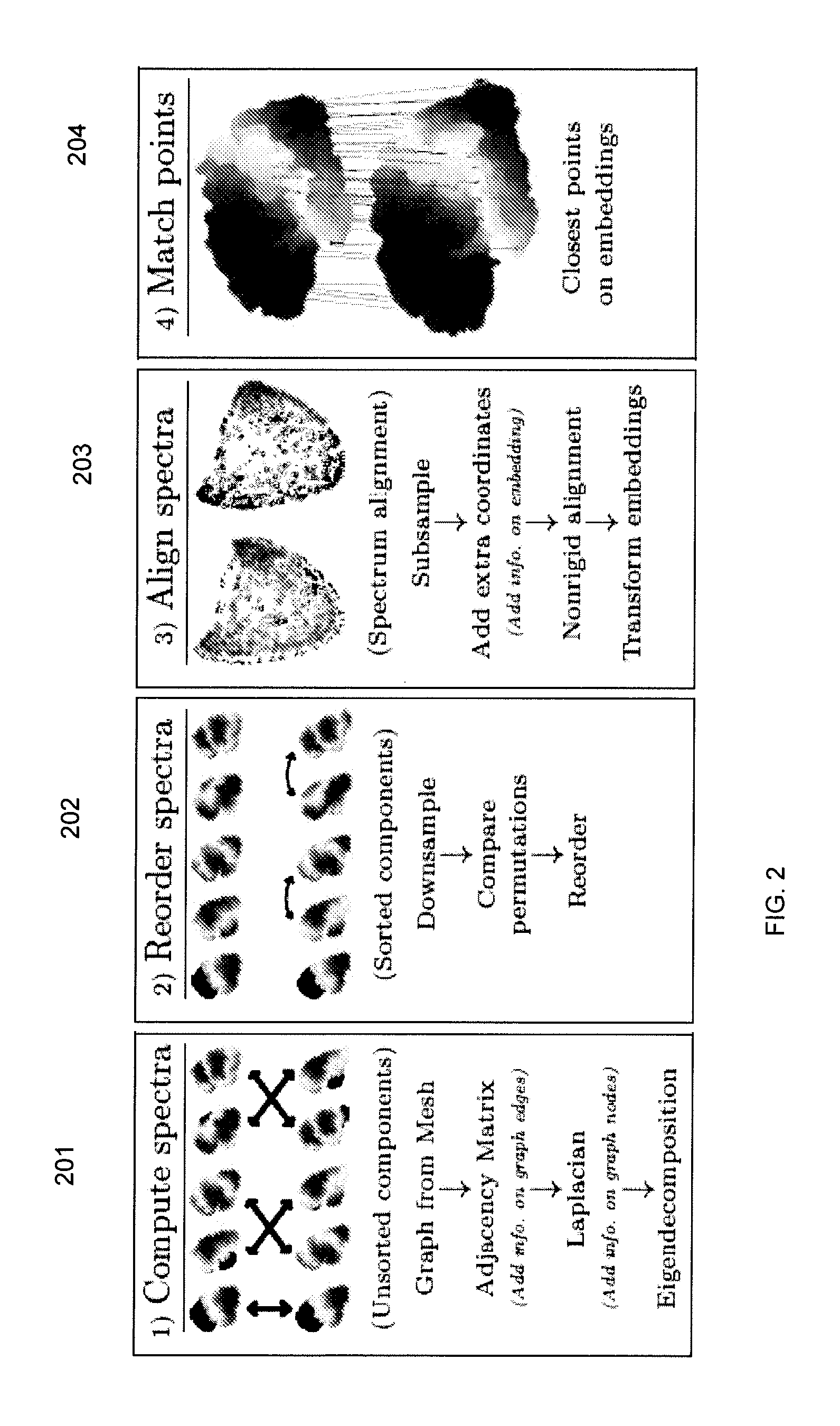Methods and systems for fast automatic brain matching via spectral correspondence
a technology of automatic brain matching and spectral correspondence, applied in the field of methods and systems for automatic brain matching, to achieve the effect of improving matching and achieving a tremendous speed advantag
- Summary
- Abstract
- Description
- Claims
- Application Information
AI Technical Summary
Benefits of technology
Problems solved by technology
Method used
Image
Examples
Embodiment Construction
[0018]The human cerebral cortex is composed of many distinct brain areas whose locations relative to the folding pattern are highly stereotyped. In many neuroimaging studies, finding corresponding locations between two individuals allows data to be pooled across subjects and enables the investigation of functional and anatomical differences between individuals. Early attempts at computing correspondences relied on the extrinsic geometry seen on brain volumetric images. In 1967, “J. Talairach, G. Szikla, P. Tournoux, A. Prosalentis, M. Bordas-Ferrier, L. Covello, M. Iacob, and E. Mempel. Atlas d'anatomie stereotaxique du telencephale. Masson, Paris, 1967” introduced an early version of a brain atlas in the form of a 3D stereotaxic coordinate system.
[0019]Despite its popularity, this method matched volumetric brain data using 3D Euclidean distances, which ignored geometric variabilities in the folding pattern. Techniques based on high-dimensional deformations allow for the alignment o...
PUM
 Login to View More
Login to View More Abstract
Description
Claims
Application Information
 Login to View More
Login to View More - R&D
- Intellectual Property
- Life Sciences
- Materials
- Tech Scout
- Unparalleled Data Quality
- Higher Quality Content
- 60% Fewer Hallucinations
Browse by: Latest US Patents, China's latest patents, Technical Efficacy Thesaurus, Application Domain, Technology Topic, Popular Technical Reports.
© 2025 PatSnap. All rights reserved.Legal|Privacy policy|Modern Slavery Act Transparency Statement|Sitemap|About US| Contact US: help@patsnap.com



